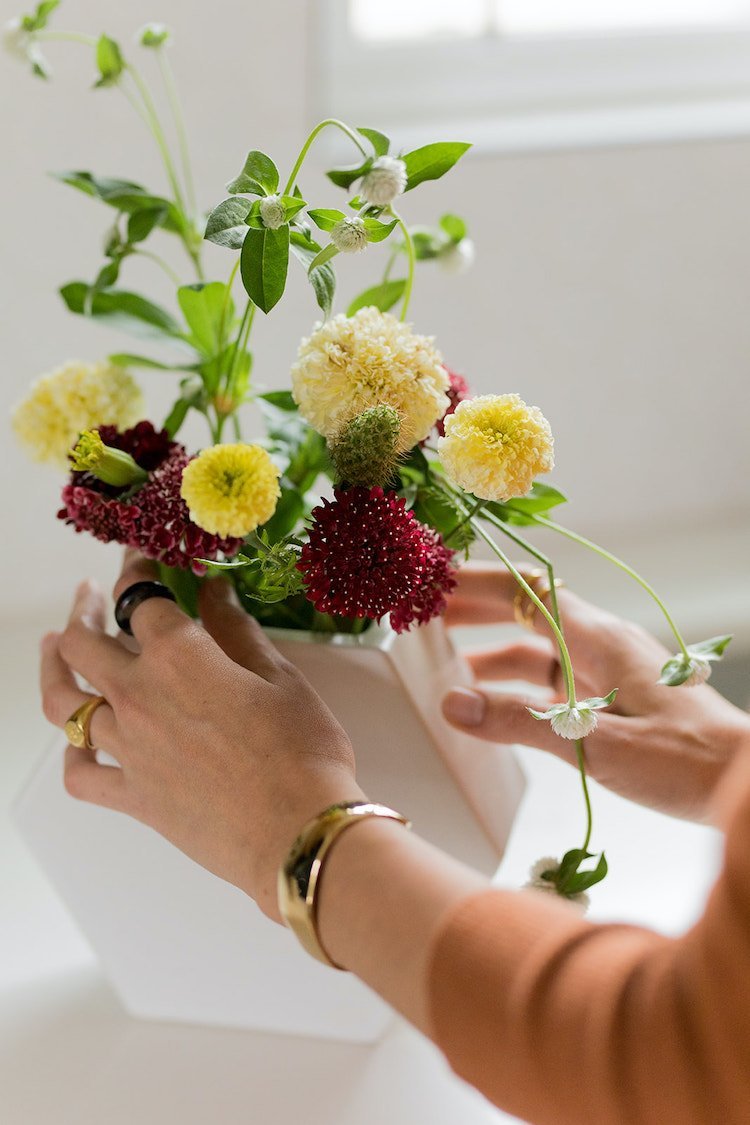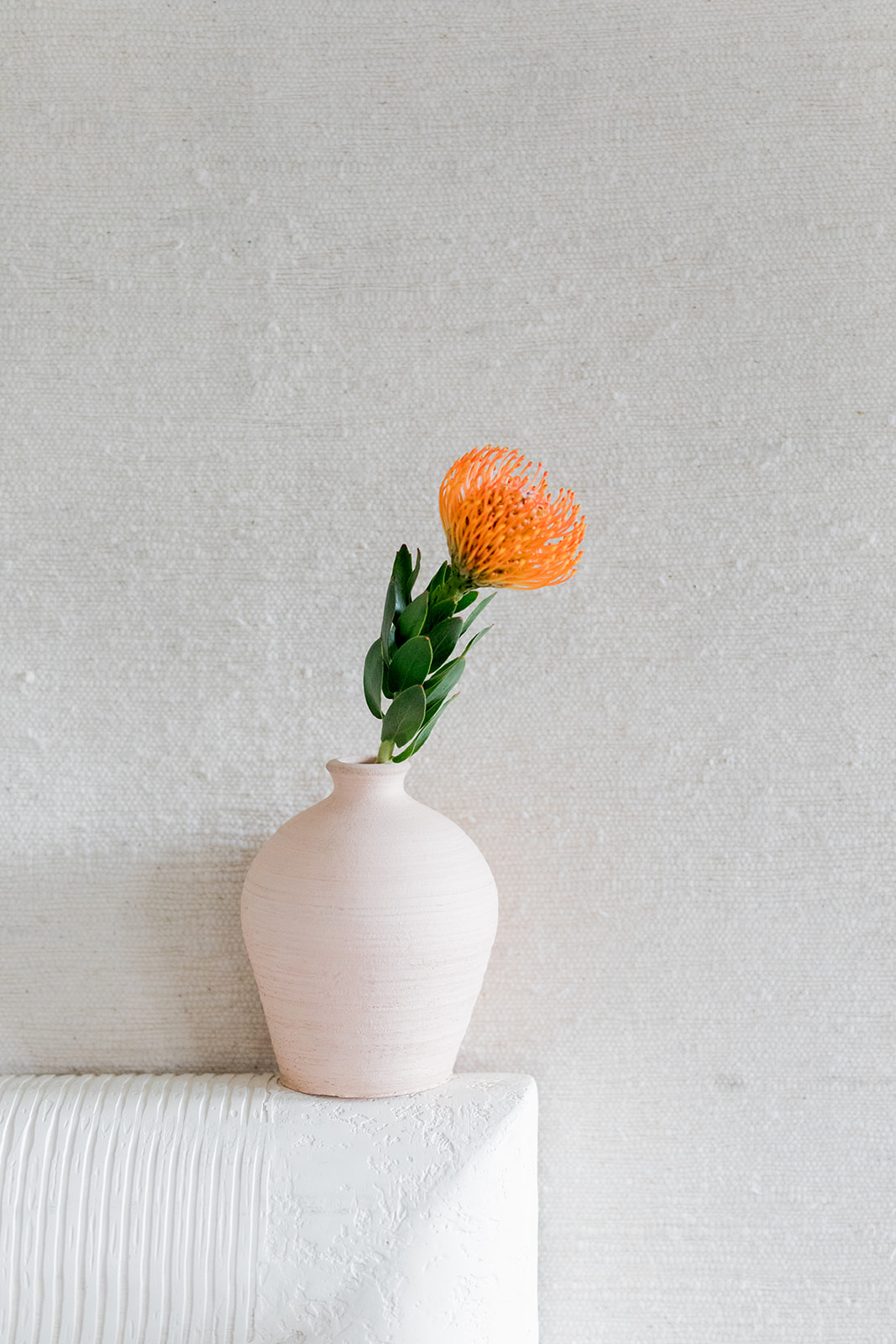
99 Hobbies You Might Consider Picking Up In 2024
Spring and summer are the perfect seasons for diving head-first into a hobby that makes you happy. If you’re struggling to come up with something that sparks joy within you, hopefully, this list of 99 hobbies will help ignite a flame within. Share your favorite creative pursuit in the comments, too!
Hobbies To Nourish Your Creativity
1. Recreate that iconic scene from Ghost (you know the one) by signing up for a pottery class. Check your local community center to see if they offer an affordable option, or support a small ceramic arts studio in your neighborhood.
2. Or skip the class, pick up some air-dry (polymer) clay, and get building. You can make trinket dishes, earrings, and more; just remember that these items won’t be food-safe or water-sealed like traditional ceramics.
3. Too many ceramics at home? Try Kintsugi, the Japanese art of repairing ceramics with gold lacquer to create something new.
4. Better yet, use old ceramics, tiles, or glass to mosaic a trivet or table.
5. Fancy yourself a Michelangelo and try sculpting.
6. Get your cottagecore grandma style on by learning to embroider. You can pick up a pattern at your local craft store if you need guidance.
7. If you like embroidering, try sashiko, a functional and ornamental way of decorating or repairing a garment that originated in Japan.
8. Or what about crocheting? We love all the crocheted bucket hats, balaclavas, and sweater vests we’ve been seeing.
9. Looking to upgrade from crochet needles? (Ooh, controversial.) Why not try knitting?
10. If you want to really wow your friends and family, you can knit using handspun yarn. That’s right, it’s possible to spin your own yarn!
11. You can also give sewing a go-to DIY for any alterations you need or, better yet, to make an outfit from scratch.
12. Weave with an easy DIY loom before investing in the real deal. You’ll end up with coasters or a cute wall hanging.
13. Punch needling is another great fiber art that we enjoy.
14. And if you’re a “go big or go home” kind of person, try rug tufting.
15. Macrame, too? Especially if you like the ‘70s! Macrame plant hangers are such a cute accessory.
16. If you’re into weaving but not into fiber, check out basket-weaving, an Indigenous practice that’s still around today. Learn more about the history and significance of this practice here.
17. Craft your own paper art. This video should be enough inspo to get you started.
18. Put paper to pen in a new way by learning calligraphy.
19. Learn to write poetry—here’s some inspiration to get creative juices flowing.
20. “We can speak in flowers,” eh? Explore flower drying—wedding or anniversary flowers are important, but a “just because” bouquet is special, too.
21. Once your flowers are dried, incorporate them into resin art—bookmarks, paperweights, etc. can all be made fairly quickly, and it’s so fun to watch them dry into a tangible object.
22. Explore the world of film photography! It will have you looking at your subjects in totally new ways.
23. Learn about darkroom printing and try to develop your own roll of film for long-lasting memories. 📸
24. Wood carving is another tactile way to create memories. You can sign up for a local class or pick up some wood blanks and a palm set at your local hardware store to try it at home.
25. You can also use that palm set to carve block stamps or linocuts. It’s a creative way to make cards, wrapping paper, or prints.
26. No sharp objects? No problem. Painting is a great way to explore your creativity.
27. Watercolors are also fun! Try different pigments and water amounts to see what you like best.
28. Sketch, draw, or doodle like you’re a kid again. There’s no harm in expressing yourself, nor is there one right way to do it.
29. Love to draw? Have you tried tattooing? As long as you keep it clean and safe, stick-and-poke kits are a great introduction. If you’re too scared to start on yourself, try a piece of fruit or a silicone “skin” sheet first (sounds gross but it’s not, I promise).
30. For something a little less permanent, try body art like henna—and be sure to learn the history of it, too.
31. If you feel like you’re not as artistically inclined, coloring books are a fun way to express yourself without the added pressure of drawing.
32. Create a cozy mood at home by dipping into the world of candle making.
33. You know what pairs well with candles? Blankets, of course. Throw it back to childhood by making fleece tie blankets, or if you’re a knitter, you can knit one.
34. Not a candle person? Try soap-making.
35. One hobby the TGT team loves is thrifting. Whether you’re grabbing homewares to DIY and upcycle or finding the sweater vest of your dreams, it can be so fun to drive around the neighborhood exploring local thrift stores. Some of our favorite gems have been found that way!
36. If you want the thrill of the thrift score without being indoors, try scouring the curbs for projects to refurbish or give a second chance. (Our Editorial Director, Emily, is the queen of this). We like driving to fancy neighborhoods for the good stuff.
Hobbies For The Outdoor Enthusiast
37. Outdoor lovers, rejoice—the new year is the perfect time to learn to navigate the wilderness, à la Survivor. Kidding! But it never hurts to learn how to live in harmony with the great outdoors, here are some books to get you started.
38. Take a hike! Seriously. Research your local parks and trails to hit the ground running.
39. Backpacking, while it may seem intimidating at first, is an amazing way to spend time outside and connect with nature. REI and other outdoor stores offer backpacking services and group adventures to get you started before going solo.
40. Join a junior ranger program at your local national park, or sit in one a class or park explainer course they offer.
41. If you like to hike but don’t want to go solo, start or join a hiking group.
42. Start a bird or wildlife-watching log.
43. Look up! Create a constellation journal and document all that you see in the night sky.
44. If you’re looking to get outdoors on a local scale, download a plant identification app and get to know your local flora. 🌸
45. Foraging (we love @blackforager for a 101) to learn more about what you can and cannot eat in the great outdoors—invaluable when hiking or even doing some urban exploring.
46. A scuba diving certification is another fun way to get outside and explore your local oceans.
47. If the deep end isn’t your thing, try snorkeling. It doesn’t require a certification, keeps you closer to shore, and is still a super fun way to explore like Ariel.
48. If being on and in the water gels with you, consider surfing. Most beaches offer surf lessons.
49. Sailing classes are also available, if tanning on a boat deck is of particular interest (it is to us).
50. For the seafood fans, try deep sea fishing for an adventure-packed day on the water.
51. Shell collecting is another relaxing way to spend time at the seaside without getting wet, especially in colder months.
52. If a river or lake is in your area, try fly-fishing or good ol’ bait-and-wait. Wait and see what you catch (and also release, especially in an area where you need permits to fish).
53. Get your body moving! Make it a plan to walk for 30 minutes (undistracted by technology) 2-3x a week. Notice how you feel.
54. Dust off the bicycle and get to pedaling. Need a new bike? Try secondhand before opting for a sustainably made set of wheels.
55. Join an adult sports league for a different kind of community engagement. ⚽
56. Play as a pair or join someone solo for a game of tennis—local high school courts are often open on the weekends and after-hours if you don’t have other options in your neighborhood.
57. Skateboarding isn’t just for kids. And no, you don’t have to drop in—it’s fun to just push around the neighborhood.
58. Four wheels on one board not doing it for ya? Try rollerblading or roller skating.
59. Geocaching is another way to get outside and explore your local area, while on a pseudo-treasure hunt.
60. You know what rocks? Geology. This can include crystals, too.
61. If you want to get up close, try bouldering or rock climbing.
62. If you’re thinking, “No, still not close enough to those big beautiful rocks,” why not consider spelunking or potholing, aka exploring caves? Just make sure they’re safe before entering.
63. If you prefer the indoors, join a cycling or movement class like yoga or pilates.
Hobbies To Expand Your Mind
64. Take a meditation or reiki class to calm and ground you in the new year.
65. Itching to get out and share your wisdom with the world? Try stand-up comedy or storytelling—you could even try submitting a story to The Moth.
66. Quick-witted thinkers: Join an improv group!
67. If you thrive in a classroom setting, take a creative writing class—virtual or IRL.
68. Put those holiday catalogs and old magazines to use by cutting them up and making collages. This is especially fun with vintage magazines and postcards.
69. Jack or joker? Pick up a deck and learn a new card game to share with friends.
70. Or, take things digital by gaming! You can play with friends or make new friends through the virtual world.
71. Work those brain muscles with the wonderful world of Sudoku or a similar brain-teaser like the NYT crosswords.
72. Learn a new language. Oui ou non?
73. Tell someone how much they mean to you with a curated playlist. Bonus points if you burn it to a CD. 🎶
74. Try to remember one thing you loved about your childhood and recreate it as an adult—whether it was visiting amusement parks, applying (eco-friendly) glitter to everything (and we mean everything) or making liquid glue bookmarks—there’s a lot to learn from your inner child.
75. Visit your local museums for a culture-filled weekend activity.
76. If you don’t have museums in your area, maybe you have a big landmark you’re known for? Like the Jolly Green Giant in Blue Earth, MN.
77. Spend some time getting outside and helping your local community with tree planting.
78. Or volunteer in other ways. You can make hygiene kits for your unhoused neighbors, volunteer to tutor kids, and more.
79. Use up your indoor space by starting a houseplant collection. It’s so fulfilling to watch them grow and learn the best conditions for each plant.
80. Don’t have your own outdoor space, but know of a place that does? Try guerrilla gardening, the act of growing on land that’s been abandoned or left empty.
81. Make a plan to visit every local weekend flea market in your area.
82. Put the flea market to use by starting a stamp collection—you’ll be amazed by all the vintage stamps you can find!
83. Stamps not your thing? Other collections work, too. Clocks, coins, cowboy paraphernalia, the opportunities are endless. Find your niche and dive into the wonderful world of eBay, thrift stores, and flea markets.
84. Too cold for the outdoors? Stay in, bundle up, and revisit all your favorite childhood films, once a week.
Hobbies For The Foodie (Or Foodie-Adjacent)
85. Movies always pair well with sweets, so try your hand at baking cookies, brownies, cakes, or whatever tickles your fancy.
86. Organize a wine and paint night with friends! Dry January? No problem—here are seven non-alcoholic spritzers to keep you sparkling.
87. Get out of the house with a beer or wine tasting at a local brewery, winery, or bar. 🍷
88. Ice cream making is a pretty delicious hobby—try experimenting with flavors you’ve never seen in stores, or by adding fresh fruits and toppings.
89. More of a sour tooth? Try making hard candies; we love watching Logan’s Candies on TikTok. (That’s a whole hobby itself.)
90. If you fancy yourself more of a chef than a baker, consider a local cooking class. Kitchen stores like Sur La Table offer them, but a quick Google search will show you what’s in your area.
91. Sauce boss! Learn how to make sauces and dressings from scratch.
92. Try your hand at mixology. Enjoy mixing new cocktails from the comfort of your home—and learn about unique flavor pairings.
93. Use kitchen-friendly ingredients for some DIY skincare. We love this matcha honey face mask.
94. If you’re lucky enough to have outdoor space, why not start a vegetable patch? It’s incredibly rewarding to eat food you’ve grown at home.
95. If you don’t have outdoor space, try growing things in water from food scraps—like lettuce.
96. Take any kitchen food scraps and try your hand at natural dye. Here’s our step-by-step guide.
97. If you live somewhere with colder climates or shorter growing seasons, try canning or pickling your produce to give it a longer life.
98. Make kombucha at home—you have to watch it, but it’s worth the effort for fresh booch!
99. Head to the farmers market and cook a meal using only what you were able to pick up seasonally.



